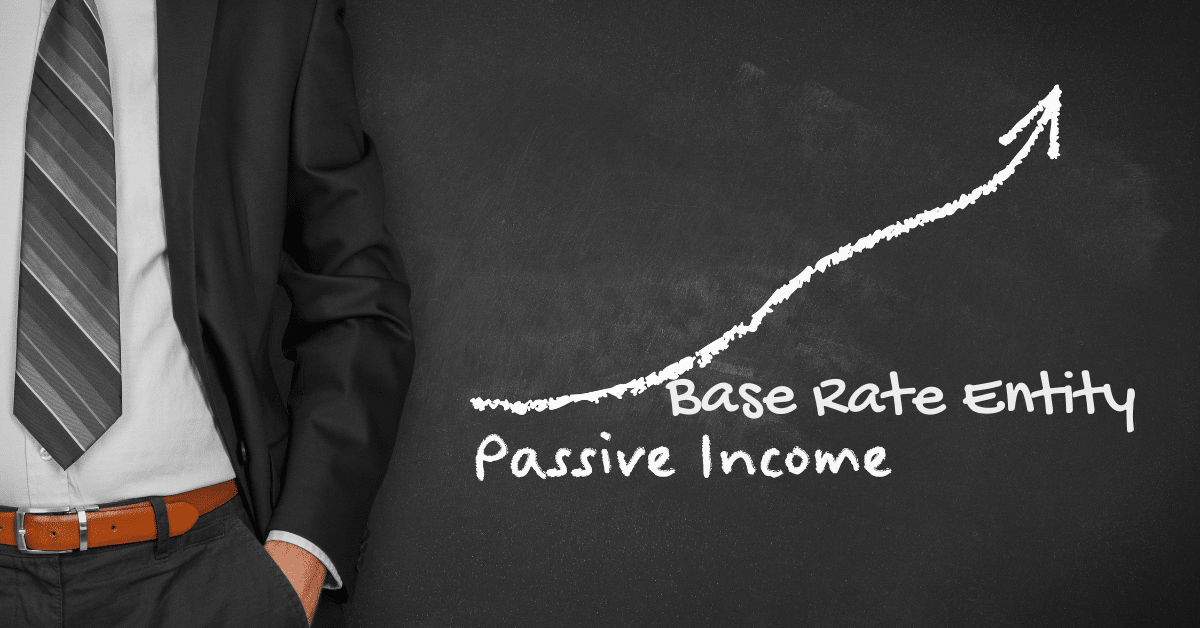Base rate entity passive income (BRPI) is a term that is becoming increasingly favored in the financial world. It refers to a specific type of income that is derived from investments and other passive activities. Understanding BRPI and how it works is crucial for anyone looking to create a passive income stream that can support their financial goals.
What is Base Rate Entity Passive Income?

Base rate entity passive income is a term that was introduced by the Australian Taxation Office (ATO) as part of the government’s 2016 tax reforms. It refers to the passive income eligible for a reduced tax rate for qualifying small businesses. The base rate entity’s stagnant income tax rate is lower than the standard company tax rate, which makes it an attractive option for business owners and investors.
It is derived from activities considered passive, such as investment income, rental income, and capital gains. This type of income is not generated from the active business operations of a company, which is why it is classified as passive. Some examples of base rate entity passive income include:
- Dividends received from shares or units of a company
- Rental income from investment properties
- Interest income from loans or other financial instruments
- Royalties from intellectual property
- Net capital obtains from the sale of assets such as property, shares, or units in a trust
The reduced tax rate for base rate entity passive income is available to small businesses with an aggregated turnover of less than $50 million. For the 2022-2023 financial year, the base rate entity passive income tax rate is 30%, 7.5% lower than the standard company tax rate of 37.5%.
How to Calculate Base Rate Entity Passive Income

Calculating base rate entity passive income is a straightforward process. First, you need to determine which activities qualify as passive income. Once you have identified the sources of passive income, you can calculate your business’s base rate entity passive income.
To calculate base rate entity passive income, you need to follow these steps:
- Identify your business’s passive income sources, such as dividends, rental, and interest income.
- Add up the total amount of passive income earned during the financial year.
- Deduct any expenses associated with generating the passive income, such as interest expenses on loans or property maintenance costs.
- The resulting amount is your base rate entity passive income.
For example, let’s say your business earned $100,000 in dividends, $50,000 in rental income, and $20,000 in interest income during the financial year. The total passive income earned is $170,000. If you incurred $30,000 in expenses associated with generating the passive income, your base rate entity passive income would be $140,000.
Benefits of Base Rate Entity Passive Income
There are several benefits to generating base rate entity passive income for your business. The most significant benefit is the reduced tax rate, which can significantly increase the net income from passive activities. Some of the other advantages include the following:
- Increased cash flow: Passive income streams can provide a steady source of income that can help improve cash flow and support business growth.
- Diversification: Investing in various passive income streams can help diversify your investment portfolio and reduce risk.
- Reduced workload: Passive income streams require minimal effort to maintain, which can reduce the workload and stress associated with active business operations.
- Long-term financial stability: A well-diversified portfolio of passive income streams can provide long-term financial stability and security.
How to Generate Base Rate Entity Passive Income?
Generating base rate entity passive income requires careful planning and investment in the right assets. Here are some strategies to help you generate base rate entity passive income. In general, passive income is any income earned without the need for active involvement or effort. This can include rental income, interest income, and dividend income. Base rate entity passive income is a specific type of passive income eligible for a lower tax rate in Australia.
This type of income is earned from passive sources, such as rental income, interest income, and dividends, by a base rate entity. A base rate entity is a type of company that meets specific criteria, including having an aggregated turnover of less than $50 million and deriving no more than 80% of its income from passive sources.
The Australian government introduced the lower tax rate for base rate entity passive income as part of their 2016-2017 budget. The aim of the lower tax rate was to encourage investment and growth in small and medium-sized businesses in Australia. The lower tax rate is intended to make it easier for these businesses to generate passive income and reinvest it into their operations.

The current tax rate for base rate entity passive income is 25%, significantly lower than the standard corporate tax rate of 30%. Companies that earn base rate entity passive payments can retain a greater portion of their earnings and use them for reinvestment their businesses. The lower tax rate is also beneficial for investors, as it can make investing in small and medium-sized companies more attractive.
Closing Thoughts
Note to yourself that not all passive income is eligible for the lower tax rate. The government has identified certain types of income that are not considered base rate entity passive income and are, therefore, subject to the standard corporate tax rate. These include income from businesses primarily involved in generating passive income, such as investment companies and rental property businesses.
To be qualified for the lower tax rate, a company must also meet specific criteria related to its ownership structure. The company must be owned by individuals, trusts, or a combination of the two. Companies owned by another company or a partnership are not eligible for the lower tax rate.
There are other additional benefits to earning base rate entity passive income. For example, passive income is generally considered a more stable income source than active income. This is because passive income is not dependent on the business’s performance or the owner’s efforts. It is also generally easier to generate passive income than active income, as there is no need to manage the source of income actively.
One of the most common sources of base rate entity passive income is rental income. Renting out property can be highly profitable, especially in areas with high demand for rental properties. Other base rate entity passive income sources include interest income from investments and stock dividend income.
Overall, base rate entity passive income is an essential source of income for many small and medium-sized businesses in Australia. The lower tax rate makes it easier for these businesses to generate passive income and reinvest it into their operations. While not all types of passive income are eligible for the lower tax rate, companies that meet the criteria can benefit from significant tax savings.
What are non-fungible token stocks

